The number of registered live births in Region I (Ilocos Region) during the second quarter of 2018 summed up to 22,668, a slight decrease of 1.5 percent compared to 23,007 births on the same period of 2017. The daily average birth occurrence during the second quarter of 2018 was computed at 249 births or an average of 10 babies born per hour. The month of April 2018 was observed to have the highest average daily births at 254 babies. While in second quarter of 2017, the month of May registered the highest daily average birth with 272 babies.
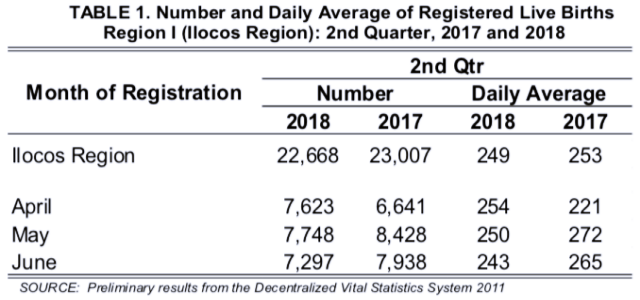
The highest number of registered live births during the second quarter of 2017 and 2018 was recorded in the month of May. The percent share of the total births in May to the quarterly totals were 36.6 percent in 2017 and 34.2 percent in 2018.
In the second quarter of 2018, the month of June was observed to have the least number of registered live births at 7,297. While in the same period a year ago, April posted the lowest number of registered live births at 6,641.
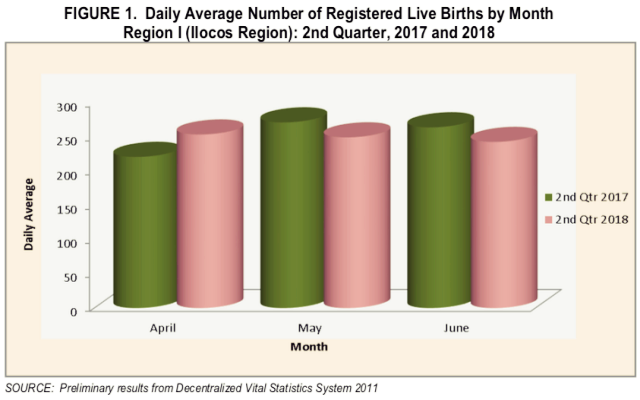

Among the provinces in the region, the province of Pangasinan registered the highest number of births in the second quarter of 2018. Its share was more than half (62.3 percent share) of the total registered births in Region I. The province of La Union ranked second with 3,267 births (14.4 percent share), followed by the province of Ilocos Sur with 2,692 births (11.9 percent share) and the province of Ilocos Norte with 2,585 (11.4 percent share).
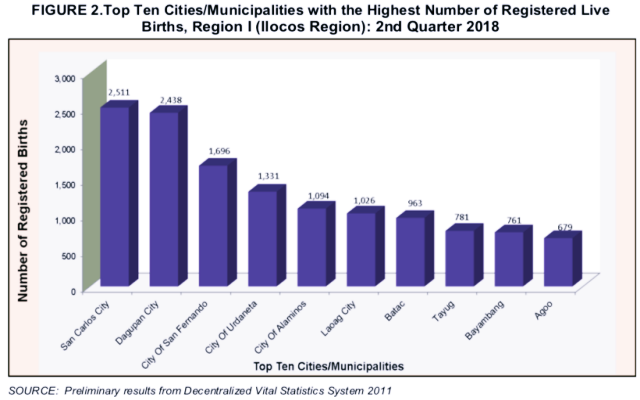
In second quarter of 2018, San Carlos City, Pangasinan ranked first among the top ten Cities/Municipalities that registered the highest number of live births with 2,511. This was followed by Dagupan City, Pangasinan with 2,438 births; City of San Fernando, La Union with 1,696 births; City of Urdaneta, Pangasinan with 1,331 births; City ofAlaminos, Pangasinan with 1,094 births; and Laoag City, Ilocos Norte with 1,026 births.
On the other hand, Dumalneg, Ilocos Norte had the lowest number of registered live birth in second quarter of 2018 with only one registered birth. It was followed by Currimao, Ilocos Norte with two registered live births, Adams and Carasi, Ilocos Norte with three registered live births each, Sigay, Ilocos Sur with four registered live births and Lidlidda, Ilocos Sur with five registered births.
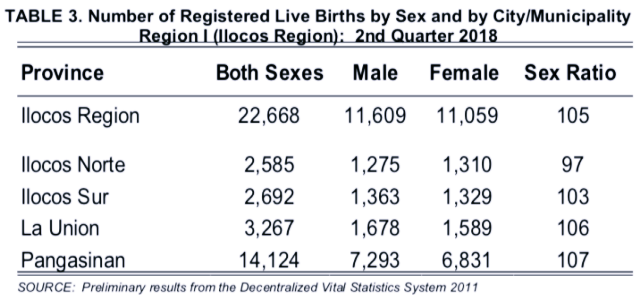
Males (11,609) outnumbered females (11,059) in terms of registered live births during the second quarter of 2018, resulting to a sex ratio of 105 males per 100 females.
Two provinces, Pangasinan and La Union posted a sex ratio that is higher than the regional ratio. The highest sex ratio of 7,293 males per 6,831 females was recorded in Pangasinan. This was followed by La Union with 106 and Ilocos Sur with 103. On the other hand, the lowest sex ratio of 1,275 males per 1,310 females was recorded in the province of Ilocos Norte.
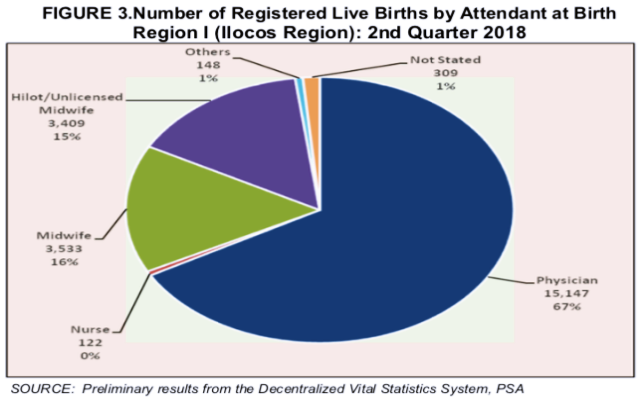
In second quarter of 2018, 82.9 percent or 18,802 of total registered live births were attended by medical practitioners which may either be a physician, a nurse or a midwife. The province of La Union had the highest percentage of birth deliveries tended by health professionals with 89.1 percent of the total registered live births in the province followed by Pangasinan with 83.4 percent, Ilocos Norte with 78.1 percent and Ilocos Sur with 77.9 percent.

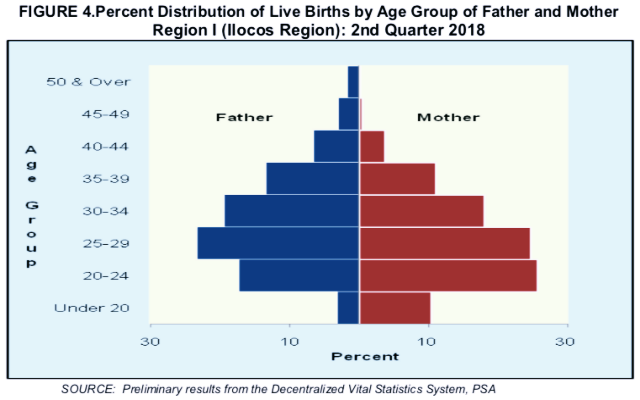
More than a quarter (25.7 percent) or 5,829 of mothers who gave birth in second quarter of 2018 belonged to age group 20 to 24. Meanwhile, the highest proportion of fathers belonged to age group 25 to 29, which is about a quarter (24.9 percent) of the total number of fathers of babies with registered births in second quarter of 2018.
Furthermore, it can also be noted that teenage mothers (2,367) was more than thrice than that of teenage fathers (696).
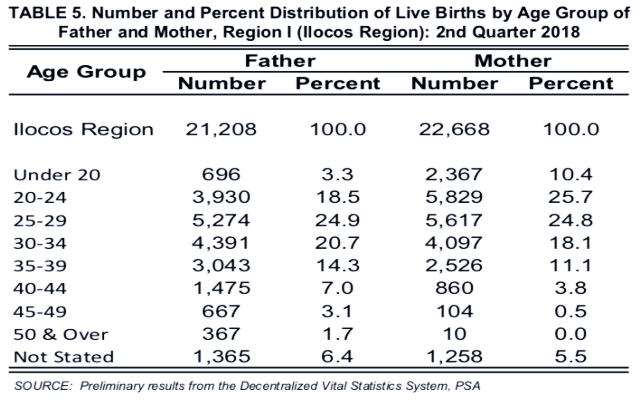
Meanwhile, a total of 10 mothers at age group 50 and over gave birth to babies who were registered in second quarter of 2018. The number of fathers belonging to age group 50 and over (367), however, was 36 times more than that of mothers.
The median age for mothers was 27.8 years old while for fathers, 30.8 years old.



